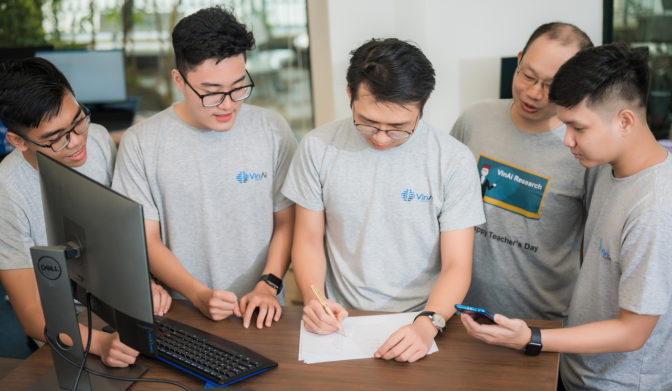By: RICK MERRITT, NVIDIASee original post at: https://blogs.nvidia.com/blog/2021/04/19/ai-superpod-vinai/
A rising technology star in Southeast Asia just put a sparkle in its AI.
Vingroup, Vietnam’s largest conglomerate, is installing the most powerful AI supercomputer in the region. The NVIDIA DGX SuperPOD will power VinAI Research, Vingroup’s machine-learning lab, in global initiatives that span autonomous vehicles, healthcare and consumer services.
One of the lab’s most important missions is to develop the AI smarts for an upcoming fleet of autonomous electric cars from VinFast, the group’s automotive division, driving its way to global markets.
New Hub on the AI Map
It’s a world-class challenge for the team led by Hung Bui. As a top-tier AI researcher and alum of Google’s DeepMind unit with nearly 6,000 citations from more than 200 papers and the winner of an International Math Olympiad in his youth, he’s up for a heady challenge.
In barely two years, Hung’s built a team that now includes 200 researchers. Last year, as a warm-up, they published as many as 20 papers at top conferences, pushing the boundaries of AI while driving new capabilities into the sprawling group’s many products.
“By July, a fleet of cars will start sending us their data from operating 24/7 in real traffic conditions over millions of miles on roads in the U.S. and Europe, and that’s just the start — the volume of data will only increase,” said Hung.
The team will harness the data to design and refine at least a dozen AI models to enable level 3 autonomous driving capabilities for VinFast’s cars.
DGX SuperPOD Behind the Wheel
Hung foresees a need to retrain those models on a daily basis as new data arrives. He believes the DGX SuperPOD can accelerate by at least 10x the AI work of the NVIDIA DGX A100 system VinAI currently uses, letting engineers update their models every 24 hours.
“That’s the goal, it will save a lot of engineering time, but we will need a lot of help from NVIDIA,” said Hung, who hopes to have in May the new cluster of 20 DGX A100 systems linked together with an NVIDIA Mellanox HDR 200Gb/s InfiniBand network.
Developing World-Class Talent
With a DGX SuperPOD in place, Hung hopes to attract and develop more world-class AI talent in Vietnam. It’s a goal shared widely at Vingroup.
In October, the company hosted a ceremony to mark the end of the initial year of studies for the first 260 students at its VinUniversity. Vietnam’s first private, nonprofit college — founded and funded by Vingroup — it so far offers programs in business, engineering, computer science and health sciences.
It’s a kind of beacon pointing to a better future, like the Landmark81 (pictured above), the 81-story skyscraper, the country’s largest, that the group built and operates on the banks of the Saigon River.
“AI technology is a way to move the company forward, and it can make a lot of impact on the lives of people in Vietnam,” he said, noting other group divisions use DGX systems to advance medical imaging and diagnosis.

Making Life Better with AI
Hung has seen AI’s impact firsthand. His early work in the field at SRI International, in Silicon Valley, helped spawn the technology that powers the Siri assistant in Apple’s iPhone.
More recently, VinAI developed an AI model that lets users of VinSmart handsets unlock their phones using facial recognition — even if they’re wearing a COVID mask. At the same time, core AI researchers on his team developed Pho-BERT, a version for Vietnamese of the giant Transformer model used for natural-language processing.
It’s the kind of world-class work that two years ago Vingroup’s chairman and Vietnam’s first billionaire, Pham Nhat Vuong, wanted from VinAI Research. He personally convinced Hung to leave a position as research scientist in the DeepMind team and join Vingroup.
Navigating the AI Future
Last year to help power its efforts, VinAI became the first company in Southeast Asia to install a DGX A100 system.
“We’ve been using the latest hardware and software from NVIDIA quite successfully in speech recognition, NLP and computer vision, and now we’re taking our work to the next level with a perception system for driving,” he said.
It’s a challenge Hung gets to gauge daily amid a rising tide of pedestrians, bicycles, scooters and cars on his way to his office in Hanoi.
“When I came back to Vietnam, I had to relearn how to drive here — the traffic conditions are very different from the U.S.” he said.
“After a while I got the hang of it, but it got me thinking a machine probably will do an even better job — Vietnam’s driving conditions provide the ultimate challenge for systems trying to reach level 5 autonomy,” he added.










